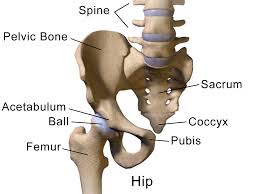How Your Posture Helps Your Balance and Reduces Pain
Maintaining or regaining your sense of balance, strength and stability are key measures in preventing falls. According to The National Council on Aging the number one step to preventing falls is finding a good balance and exercise program. One in four Americans aged 65+ falls each year. Falls are the leading cause of fatal injury and the most common cause of nonfatal trauma - related hospital admissions among older adults. A growing number of older adults fear falling and, as a result, limit their activities and social engagements. This can result in further physical decline, depression, social isolation, and feelings of helplessness. Being able to maintain your balance is a fundamental aspect of mental and physical health that boosts confidence and a sense of independence.
If you tend to stand hunched over or leaning to one side your body weight is not aligned in the most safe way. Stacking and lengthening your body will maintain your balance better. Good posture places you in an alignment where stress is properly distributed to the intended muscles and ligaments. As a result, the muscles are allowed to work efficiently and as intended, which in turn decreases wear and tear on your joints. This decreases your risk of joint discomfort and degenerative arthritis.
some fundamentals
While standing: Bring the feet right under your hip joints, not the outer hips, but the center of the hips. Weight the two feet evenly. Press down equally through the four corners of your feet. Stack the hips over the front of the heels and the shoulders over the hips. Draw the ears back, over the shoulders, and up, towards the sky. Feel as if you just gained a couple inches in height. Find your breath and follow it as it moves in and out. Each in-breath the body lifts and lengthens. Each out-breath is a natural release and rest. Try it now and see how you feel. Any better?
While seated in a chair
Sit up tall off the back of your chair. Have both feet on the floor. Roll onto the center of your sitting bones (link). Lengthening your spine and opening your chest. Relax your shoulders down and onto your back. Try it now. Notice if your lung capacity has changed.

